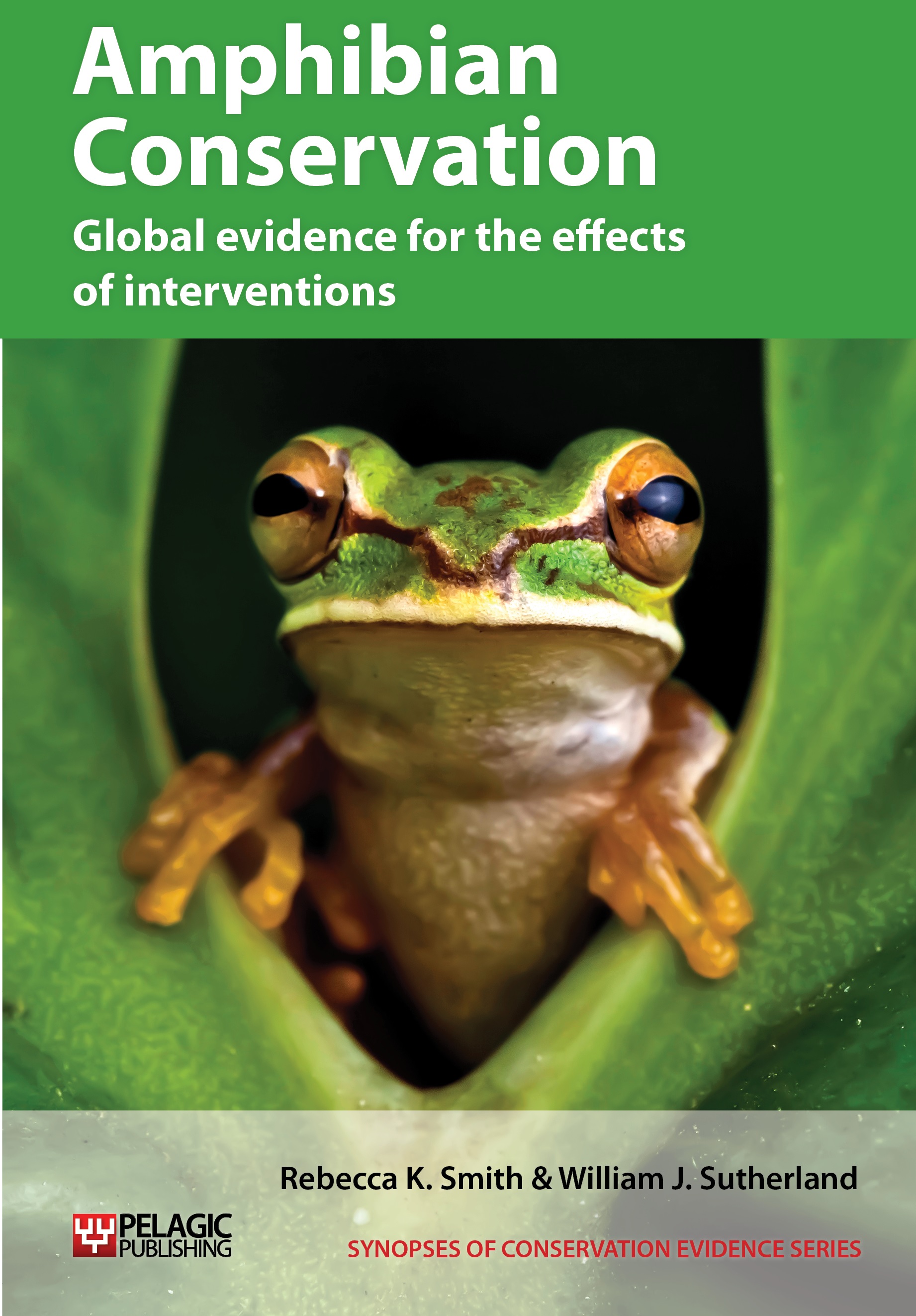Actions to conserve biodiversity
We have summarised evidence from the scientific literature about the effects of actions to conserve wildlife and ecosystems.
Review the evidence from the studies
Not sure what Actions are? Read a brief description.
Search for evidence
e.g. "frogs chytrid"
130 Actions found
Refine
Hide
130 Actions found
Download Actions
| 0 selected |
|
Order results by:
| Action | Effectiveness | Studies | Category | |
|---|---|---|---|---|
|
Add lime to water bodies to reduce acidification Action Link |
Trade-off between benefit and harms | 5 |
|
|
|
Add nutrients to new ponds as larvae food source Action Link |
No evidence found (no assessment) | 0 |
|
|
|
Add salt to ponds to reduce chytridiomycosis Action Link |
Unknown effectiveness (limited evidence) | 1 |
|
|
|
Add specific plants to aquatic habitats Action Link |
No evidence found (no assessment) | 0 |
|
|
|
Add woody debris to ponds Action Link |
No evidence found (no assessment) | 0 |
|
|
|
Artificially mist habitat to keep it damp Action Link |
Unknown effectiveness (limited evidence) | 1 |
|
|
|
Artificially shade ponds to prevent desiccation Action Link |
No evidence found (no assessment) | 0 |
|
|
|
Augment ponds with ground water to reduce acidification Action Link |
No evidence found (no assessment) | 0 |
|
|
|
Captive breeding frogs Action Link |
Trade-off between benefit and harms | 34 |
|
|
|
Captive breeding harlequin toads (Atelopus species) Action Link |
Trade-off between benefit and harms | 6 |
|
|
|
Captive breeding Mallorcan midwife toads Action Link |
Trade-off between benefit and harms | 3 |
|
|
|
Captive breeding salamanders (including newts) Action Link |
Trade-off between benefit and harms | 8 |
|
|
|
Captive breeding toads Action Link |
Trade-off between benefit and harms | 12 |
|
|
|
Change mowing regime Action Link |
Unknown effectiveness (limited evidence) | 1 |
|
|
|
Clear vegetation Action Link |
Likely to be beneficial | 9 |
|
|
|
Close roads during seasonal amphibian migration Action Link |
Likely to be beneficial | 2 |
|
|
|
Commercially breed amphibians for the pet trade Action Link |
No evidence found (no assessment) | 0 |
|
|
|
Control invasive plants Action Link |
Likely to be beneficial | 2 |
|
|
|
Create artificial hibernacula or aestivation sites Action Link |
Likely to be beneficial | 4 |
|
|
|
Create habitat connectivity Action Link |
No evidence found (no assessment) | 0 |
|
|
|
Create microclimate and microhabitat refuges Action Link |
Evidence not assessed | 0 |
|
|
|
Create ponds for amphibians Action Link |
Beneficial | 30 |
|
|
|
Create ponds for frogs Action Link |
Beneficial | 12 |
|
|
|
Create ponds for great crested newts Action Link |
Likely to be beneficial | 7 |
|
|
|
Create ponds for green toads Action Link |
Likely to be beneficial | 3 |
|
Download Actions
| 0 selected |
|

Amphibian Conservation - Published 2014
Amphibian Synopsis
Watch this search
If you are familiar with RSS feeds, please click the button below to retrieve the feed URL:
RSS feed for this searchIf you are unfamiliar with RSS feeds, we would suggest reading this BBC article.
Unfortunately, due to the number of feeds we have available, we cannot provide e-mail updates. However, you could use tools such as Feed My Inbox to do this for you.
What are 'Individual studies' and 'Actions'?
Individual studies
An individual study is a summary of a specific scientific study, usually taken from a scientific journal, but also from other resources such as reports. It tells you the background context, the action(s) taken and their consequences.
If you want more detail please look at the original reference.
Actions
Each action page focuses on a particular action you could take to benefit wildlife or ecosystems.
It contains brief (150-200 word) descriptions of relevant studies (context, action(s) taken and their consequences) and one or more key messages.
Key messages show the extent and main conclusions of the available evidence. Using links within key messages, you can look at the paragraphs describing each study to get more detail. Each paragraph allows you to assess the quality of the evidence and how relevant it is to your situation.
Where we found no evidence, we have been unable to assess whether or not an intervention is effective or has any harmful impacts.





)_2023.JPG)














